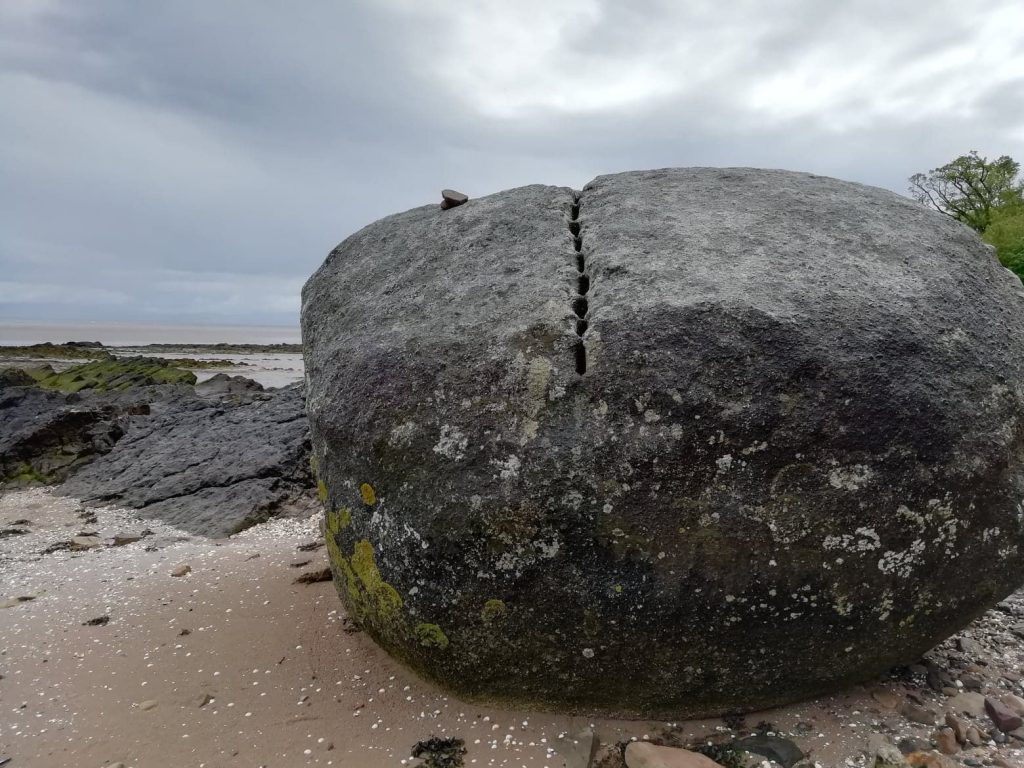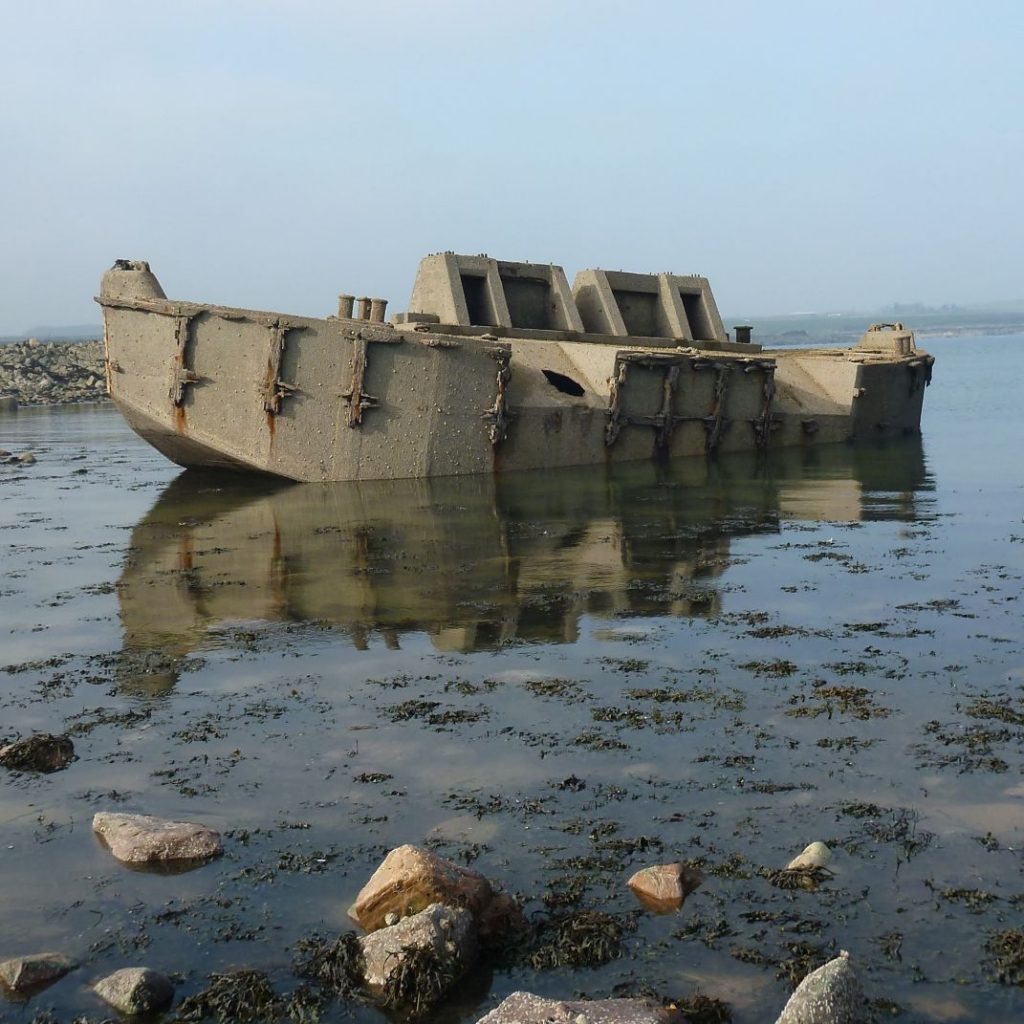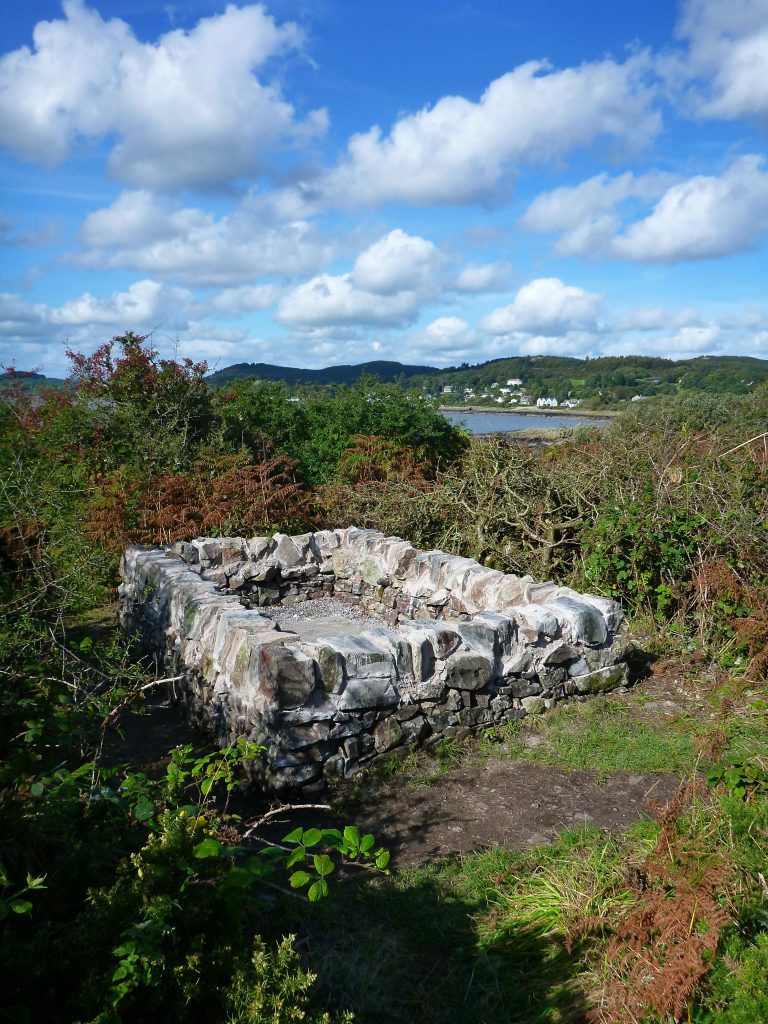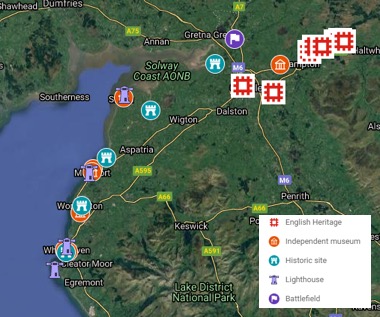Historic environment and cultural heritage
Scotland - Historic Environment and Cultural Heritage Activity
Maritime Wrecks
The long history of seafaring in the Solway Firth means that it is, inevitably, the location of a large number of maritime wrecks and losses.
A register of the known and presumed locations of wrecks (illustrated by crosses) and losses (illustrated with circles) is maintained by Historic Environment Scotland – illustrated in the map opposite.
The protected wrecks (red crosses) are located near the village of Garlieston and each indicates the remains of prototype Mulberry Harbours. These were temporary portable harbours that were tested on the Solway prior to their use in the Allied invasion of Normandy in 1944, during World War II. The role the area played in developing and testing the pioneering structures, vital to the success of the D-Day landings, continues to act as an attraction (BBC News Scotland, 2019).
Previous defence activity in and around the Solway contributes to the cultural heritage and draws visitors to the area through tourism. Garlieston has had exhibitions and books focussed on this point in Garlieston’s history, and even holds a military themed weekend called ‘Garlieston’s Military Weekend‘ each year with a vintage 1940’s theme to celebrate and remember the historic connection Garlieston had to World War II.
Coastal Historic Properties and Sites
The Galloway coastline is dotted with sites of historical significance, including castles, churches, and other sites such as standing stones and cairns, as well as a number of museums and heritage attractions. Many of these are managed by Historic Environment Scotland, of which the most prominent is Caerlaverock Castle (pictured on the following page), located south of Dumfries. The castle received 35,305 visitors in 2018, down -8% on the previous year.
There is also a network of Dumfries & Galloway Council-operated local heritage museums, with free entry, spread around the Solway coast, with locations in:
- Stranraer, with 10,580 visitors in 2017;
- Wigtown, with 8,310 visitors in 2017;
- Kirkcudbright, with 12,245 visitors in 2017; and
- Annan (no data available).
The coastal setting of each town means that the marine environment has played an important role in their culture, economy and society through the centuries, and this is reflected in each museum’s collection and interpretation.

Scottish Solway- Historic Sites and Museums. (Source: Online searches. Map Data © Google Maps)
There are ten lighthouses on the Scottish Solway coast, although not all of them are still maintained by the Northern Lighthouse Board.
The Scottish Solway Lighthouses are (from east to west);
- Southerness
- Hestan Island
- Little Ross
- Mull of Galloway
- Crammag Head
- Port Logan
- Portpatrick
- Killantringan
- Corsewall Point
- Loch Ryan
The Mull of Galloway lighthouse is part of the Scotland’s Outstanding Lighthouses tourism initiative. It includes a visitor centre and coffee shop, open seasonally and operated by the Mull of Galloway Trust, a community landowner. It received 9,812 visitors in 2017. The three lighthouse cottages are also available for let by visitors.
Southerness lighthouse was decommissioned in 1931 and is under private ownership – the building is Category A listed but due to its poor condition, is included on the Buildings At Risk Register.
Of the independent heritage museums around the Scottish Solway coast, the John Paul Jones Cottage Museum and Visitor Centre, located near Southerness, has a specific marine focus. The museum is the birthplace of John Paul Jones (1747-1792), who was a commander in the American Revolutionary War and considered to be the ‘father of the American Navy’.
The Solway Military Trail was launched in 2019 to increase awareness of the area’s military history and promote it as an attraction for visitors. Funding and support was provided by Visit Allerdale, Foundation Scotland and Solway Firth Partnership. The four trail routes take in both sides of the Solway Firth, with attractions on the Scottish side including the Devil’s Porridge Museum at Eastriggs, the Dumfries & Galloway Aviation Museum at the former RAF Dumfries, and remains of a WWII bombing target on Sandyhills beach.
Much of the physical evidence of WWII history around Loch Ryan has been dismantled and dispersed. However there are a few publicly accessible sites that still show structures from that period such as the lookout post and flying boat slip ways at the Wig. The Loch Ryan WWII leaflet below provides more information of sites to visit.
The Galloway Glens Landscape Partnership Scheme is a multi-million National Lottery Heritage Fund supported initiative that is aiming to undertake a series of projects across the area to ‘connect people, communities and their heritage’ around the River Ken and River Dee, from the source to the sea, and includes the towns of Kirkcudbright and Castle Douglas. Having secured funding for five years, it will run until around 2022. The scheme is running a range of natural and historic environment focused projects, around skills and education, conservation, access, and developing the visitor economy.
Listed Buildings and Scheduled Monuments
Hundreds of listed buildings are spread along the coastline of the Solway Firth Region. Listed status is awarded to buildings with special historical or architectural interest, and in Scotland is administered by Historic Environment Scotland. While not all of these buildings and monuments will have a strong connection with the maritime past, many do.
Scheduled monuments are also spread throughout the region, a designation reserved for archaeological sites and monuments deemed to be of national importance. These are often defensive installations or religious sites, and can date from prehistoric times to as recently as the Second World War.
Prominent ‘A’ listed buildings on or near the Scottish Solway include Caerlaverock Castle, Logan House, and Portpatrick Old Parish Church, as well as the Corsewall, Southerness and Mull of Galloway lighthouses.
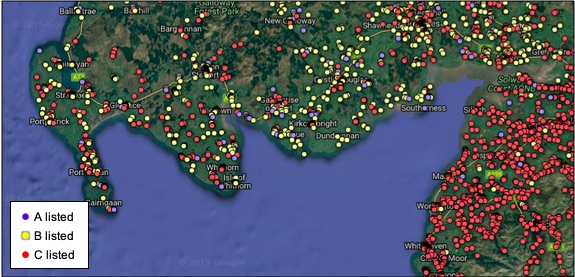
Scottish Solway- Listed Buildings (Source: British Listed Buildings (n.d.) please note the interactive map on this website has since been shut down. Map Data © Google Maps)
Funding
A variety of funding mechanisms are available to support the preservation of coastal historic environment and cultural heritage. This includes the UK Government’s Coastal Communities Fund, which aims to stimulate economic development in coastal towns, and the National Lottery Heritage Fund which provides grant funding to support a wide range of heritage projects.
Coastal Heritage at Risk
The Scotland’s Coastal Heritage at Risk project is run by the SCAPE Trust, a charity based at the University of St Andrews. Between 2012 and 2016, the project set out to map coastal heritage sites around Scotland that are threatened by erosion – the key sites within the Scottish Solway are shown in the map below.
Sites were recorded by volunteers and then assessed against different criteria (including their vulnerability, intrinsic value, and community value) and assigned a priority rank. The project has also involved community initiatives at locally-valued threatened sites – including two on the Scottish Solway. Both projects involved working with local young people to produce videos focused on local coastal heritage. Much of this is about recognising that a process of loss is inevitable, and taking steps to record information while it is available. Using this as an opportunity to engage communities in the process can then increase awareness and understanding of coastal heritage and archaeology.

Scottish Solway- Coastal Heritage Sites at Risk (Source: SCHARP Sites At Risk Map (Scotland’s Coastal Heritage at Risk, n.d.). Map Data © Google Maps)
Some of the sites ranked as high priority include a pre-Medieval fort near Isle of Whithorn, the Mulberry Harbour remains at Garlieston, two shipwrecks near Kirkcudbright, a Victorian inter-tidal lido at Powfoot, and a possible 13-15th century kiln at Redkirk Point.
Image; Scotland’s National Marine Plan Interactive, with layers (links will provide usage licence, data provider, etc); ‘Solway Region (mask)‘ © Crown Copyright, All rights reserved, ‘Wrecks (HES) – November 2018‘ © Crown Copyright, All rights reserved, ‘Losses (HES) – November 2018‘ © Crown Copyright, All rights reserved.


